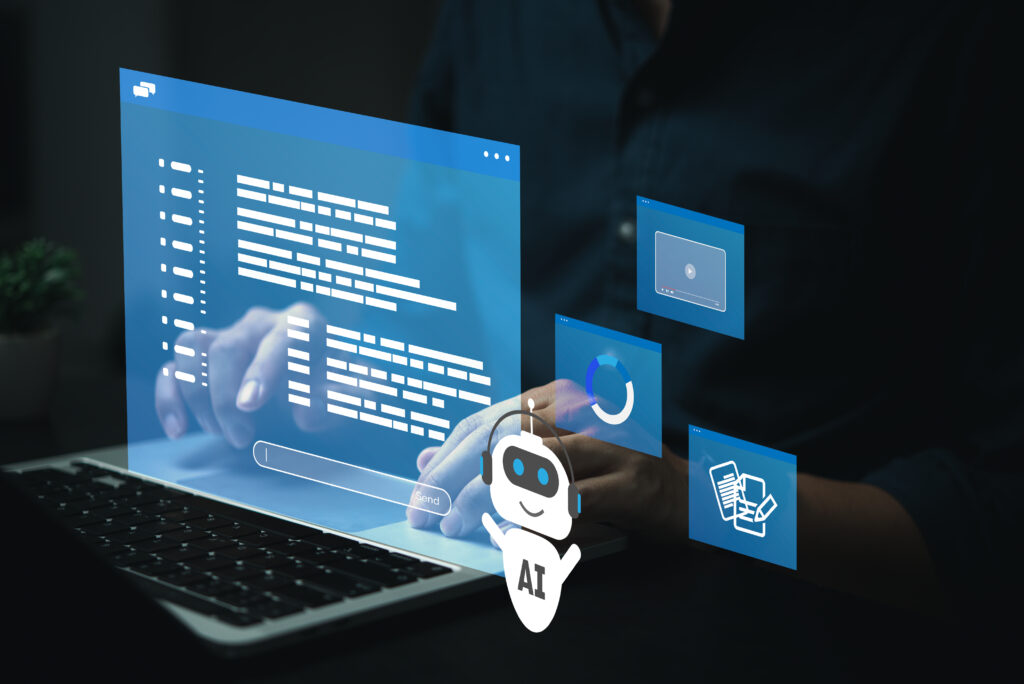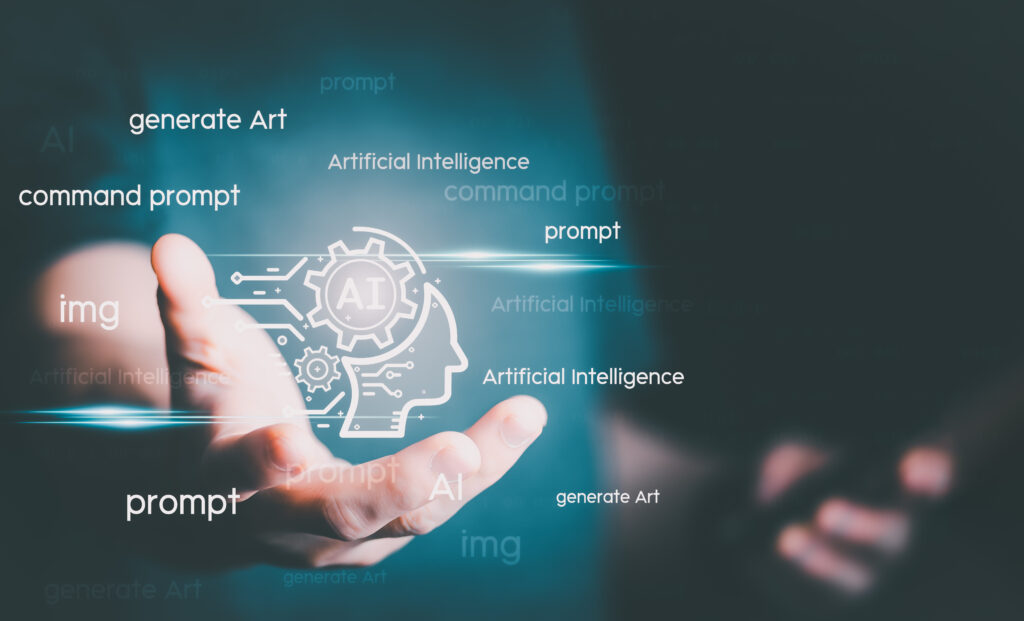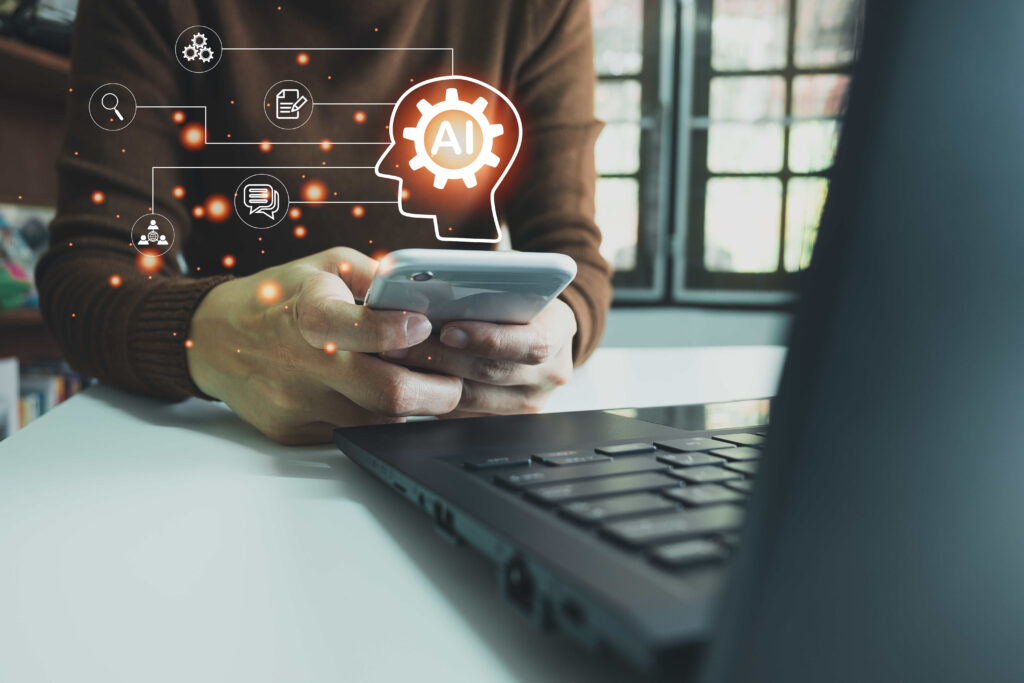Table of contents:
Advancements in technology are not a new trend anymore, at least not in today’s constantly evolving world. However, AI of Things is an intriguing and exciting whole new ballgame altogether. The emergence of AIoT has the potential to revolutionize our interactions with devices and data.
More importantly, this technology will change devices from simple data collectors to smart decision-makers. Okay, that sounds great, but what does that even mean, and more importantly, what difference does it make? That’s exactly what we will cover in this article. We will also explore how it all works and why you should care. Let’s dive in.
What is the AI of Things?
The AI of Things, or AIoT, is the combination of AI technologies and IoT infrastructure. The idea is to create more efficient IoT operations, improve human interaction with smart devices, and help them (the devices) learn and make decisions on their own. Sounds like the stuff of science fiction, but this is a lot closer to reality than you think.
For example, your smart thermostat can predict your needs based on your past data and regulate the temperature based on your schedule and preferences. This is the benefit of combining AI and the Internet of Things.
The AI of Things is the supercharging of connected devices and digital machines with AI intelligence, which gives them the ability to transfer data over a given network. It actively analyzes the collected data, learns from it, and takes action based on the insights.
Imagine these devices talking to each other and learning your preferences. Why? They can all better meet your needs at any given time. Neat, right?
AI components in IoT devices create a more responsive and intelligent environment by providing automation, predictive analytics, and decision-making capabilities.
How does the AI of Things work?
Are you curious about the intricate processes that enable AI systems to function flawlessly? We got you. Here’s what’s really happening:
- Data Collection: IoT devices’ sensors collect large amounts of data from video footage, user preferences, and temperature readings.
- Data Transmission: A central hub or cloud-based platform receives the collected data for further processing.
- AI Analysis: To spot unusual patterns and provide insightful information, AI algorithms thoroughly analyze the data.
- Predictive Insights: Occasionally, AI’s predictive algorithms can utilize historical data to anticipate potential machine failures. This allows them to provide machinery maintenance and improvements before they occur.
- Proactive and Adaptive Systems: IoT data and AI processing allow artificial intelligence systems to manage current conditions and anticipate future changes. This ensures a smarter and constantly evolving system.
5 Things You Need to Know About AI of Things: The Big Pros and Cons
Before diving into AIoT, you must understand its potential and challenges. That way, you are better prepared to handle any unexpected issues that crop up. In light of this, here are five essential points to consider, starting with the positive aspects:
Pros #1: Enhanced Decision-Making and Automation
One major benefit of AI is improved decision-making. IoT systems that leverage AI can streamline complex tasks and make decisions without human intervention.
For example, if you have an AIoT device in your smart home, you can learn how to adjust smart devices according to user patterns and preferences, thereby optimizing energy levels. This capability to automate tasks efficiently helps reduce costs, and who wouldn’t like to save a few bucks on their energy bills? As a result, there are better user experiences and increased efficiency. If you run a business and are considering doing the same, it is recommended that you see a technology consultant who can help guide you through the best strategies that match your needs.
Pros #2: Real-Time Data Processing
Real-time data processing services are extremely valuable to industries such as healthcare, finance, and so on, which is a significant benefit that the AI of Things provides. Its ability to analyze large volumes of data and provide immediate response can be a life-saving solution for health workers and the banking sector, where timely fraud detection can be a lifesaver.
With this technology, hospitals and healthcare facilities can monitor patients’ vitals in real time, alerting a health specialist to provide timely intervention upon detection of any critical change. This instant action on data is a game-changer in various industries.
Pros #3: AI of Things Across Industries
AIoT applications are becoming increasingly common in many industries. Agriculture now uses AIoT systems to monitor soil conditions, weather patterns, and crop health to optimize farming practices. In retail, smart shelves equipped with IoT sensors and AI can track inventory levels and predict restocking needs, reducing waste and improving supply chain efficiency.
For example, retail giants like Walmart and Amazon are constantly testing new ways to integrate smart solutions that streamline their operations, including smart shelves. These AI of Things examples demonstrate AIoT’s versatility and impact in transforming traditional industries. But it’s not all roses and sunshine, though, which brings us to the cons.
Cons #1: Data Privacy and Security Concerns
Despite its incredible advantages, one significant challenge associated with AIoT is that it can also raise significant concerns regarding the security and privacy of user data. The Internet of Things and AI, together, collect and analyze large amounts of personal, sensitive, and important user data.
This is a huge deal, considering the massive damage that a data breach can cause. In 2023, there were over 78% more cases of publicly reported data compromises compared to the previous year. At the same time, cyberattacks involving stolen data have increased by 71% each year. We anticipate this trend to persist as individuals increasingly gravitate towards digital services.
Clearly, protecting this data from breaches, unauthorized access, and misuse can be a difficult challenge. This is why developers of AIoT technologies at North South Tech always prioritize cybersecurity standards and policies to safeguard data and maintain its integrity and confidentiality.
Cons #2: AI and IoT Integration Challenges
The integration capabilities of the AIoT are another challenge. Integrating AI with existing IoT systems can be a complex and difficult task. Professionals with understanding and experience in these technologies are often required to seamlessly connect both items.
On top of that, companies may also have to struggle with compatibility issues, data integration hurdles, and the need for advanced infrastructure. Still, the ability to scale through these challenges can be a window to unlock greater innovation and efficiency. After all, in the global digital market, you either adapt or go home (lose relevance).
Conclusion: What Does the Future of AI of Things Look Like?
The AI of Things represents a significant advancement in how technology makes accurate judgments without human intervention. By combining IoT’s connectivity with AI’s intelligence, we’re creating smarter, more intuitive, and proactive systems.
Even with its challenges, such as data security and integration, the benefits of AIoT are undeniable. As technology continues to evolve, the collaboration of AI and IoT will undoubtedly play a crucial role in shaping the future of our connected world. In summary, the future appears bright, and we are only at the start.
Wondering how you can leverage AIoT solutions to supercharge your business growth? Let’s talk.




